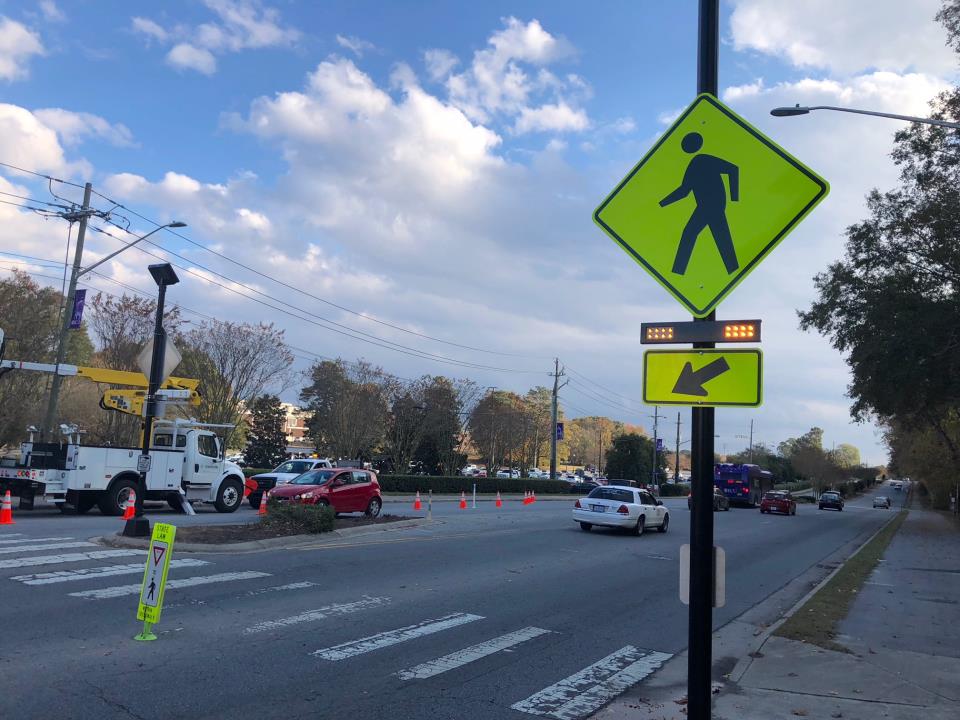As it slowly gets closer to 7 p.m. on any weekday, ECU students can be seen making their way to the basement of Christenberry Memorial Gym. At the bottom of the stairs, rap music blares off the speaker, jump ropes connect with the concrete floor, and the sound of gloves hitting the heavy leather bag reverberates. This routine has been typical for ECU Club Boxing members for the past couple of years, but the hard work is finally paying off with their eyes now set on competition for the first time in the club’s history.
Aaron Lutz, the co-president of Club Boxing, joined the club soon after arriving at ECU. “I showed up with no expectations, and I fell in love with the environment and the people,” said Lutz, a senior marketing major. Lutz became co-president after expressing interest in running the club’s social media account.
Lutz wanted to make the club feel like a family but also give the members who wanted to take boxing seriously a platform to do so. This would lead to creating a competitive boxing team, which started this semester. Lutz said that he and the club’s coach, Jacob Gillem, hand-selected the members that would be part of the competitive team.
Lutz said that having a coach takes the stress off the club officers, so they have time to focus on their classes and not on running practice. It also gives the 52 members a different perspective rather than what the club officers already know.
Gillem, the club’s boxing coach, is a former club member, who joined his freshman year at ECU in 2017 until he graduated in 2023.
Gillem became the coach in 2024 after he asked a previous club president if he could help the club somehow. Gillem offered to help for free but is paid for his services by the club. When he is not the club’s boxing coach, Gillem works as a maintenance supervisor for Keystone Management’s maintenance department, which manages apartment complexes in Greenville.
During practice, Gillem has his boxers do conditioning drills that are specific to the sport of boxing. These drills help the boxers to exercise the muscles they will use during a match to help avoid fatigue and build muscle memory. After the conditioning, they practice boxing techniques to help advance their knowledge of the sport.
“My biggest thing is networking. I’m a young coach, and a lot of boxing coaches are usually in their 40s or 50s,” said Gillem. Networking helps Gillem make connections with other people in the sport to help benefit the club. One recent experience that Gillem used to network was when the club visited Burgess Boxing in Spring Lake, North Carolina. The club’s competitive team visited Burgess to spar in preparation for competition.
Gillem had trained at Burgess Boxing during his own time as a boxer, but this time he returned as a coach. “Learning how to balance out their nerves as well as my own was hard,” Gillem said, describing his boxers. After each of the clubs’ boxers had a chance to spar, Gillem said his nervous emotions subsided.
One of the boxers Gillem said has improved the most since he has been coaching is Donte Whitehead, a sophomore psychology major. Whitehead will compete in his first amateur fight at 195 pounds in Asheville, North Carolina, on April 12. Whitehead said he first heard of the club after former club president James Dimalanta approached him at the ECU Student Center. “He kind of talked me into it, and then I decided to give it a chance,” Whitehead said.
Since starting to box, Whitehead said he lost weight and gained muscle, improving physically and mentally in his development as a boxer. “The mindset really changes when you want to compete because then you have to prepare for a lot more. You have to sacrifice a lot more,” Whitehead said.




